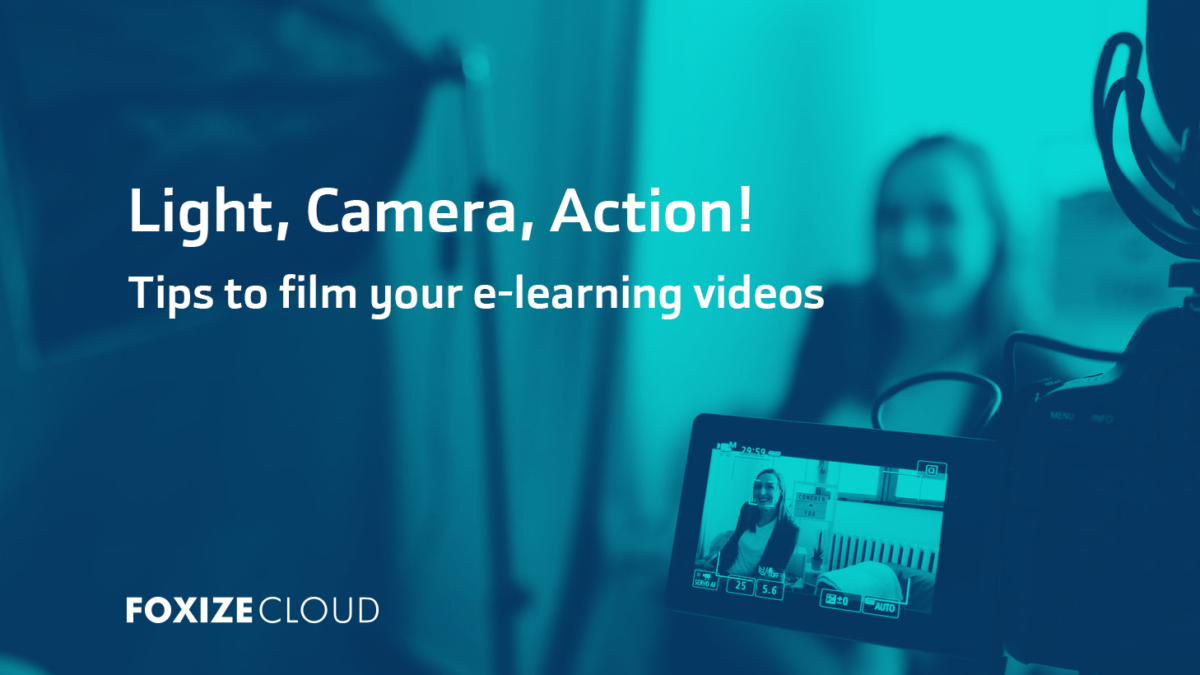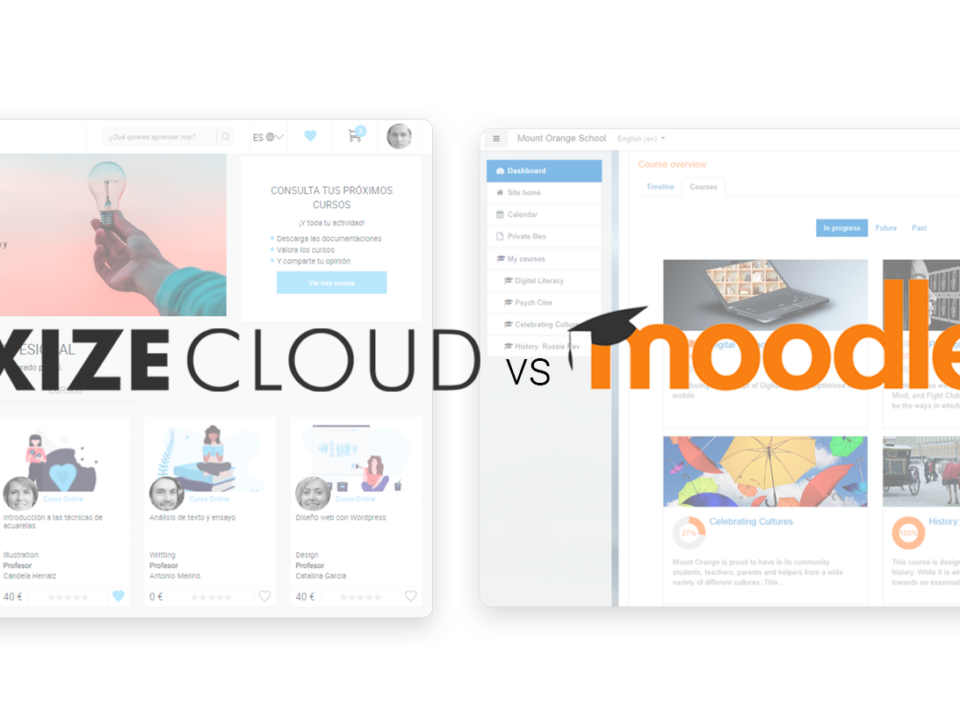Thanks to technological advances in recent years, it is no longer so difficult to find cameras and recording material at a good price and accessible to everyone. In fact, many of us have mobile phones in our pockets that incorporate cameras capable of recording in HD and even 4K.
For this reason, there is no longer an excuse to record videos with poor quality that can harm our online courses, not only for the value they can bring, but also for our brand image.
Some people decide to hire an outside studio to make the recordings, but many venture to produce the videos of their online courses themselves. If you are one of them, this post is for you.
Next, we share with you a series of tips, materials and techniques so that you can record your elearning courses like a professional.
1. Camera
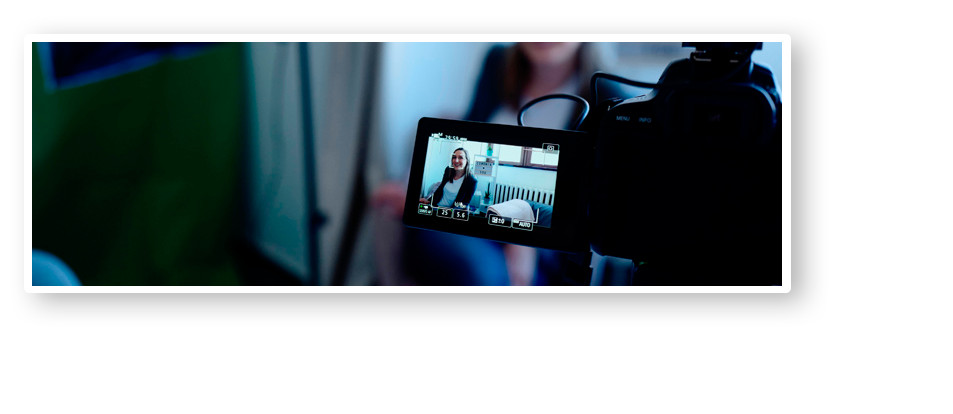
There are numerous cameras on the market that you can use to record your online courses, even your mobile as we have already mentioned before. The essential feature that the camera you use must have is that it records in good quality, that is, that it can record in HD or Full HD or even in 4K, although the latter is not essential. Keep in mind that the higher the recording resolution is, the heavier the video clips are and the more performance your computer will need to process and edit them.
If you use your mobile to record your online courses, remember to record them horizontally and use the rear camera, which is usually of higher quality. Do not forget either to use a tripod for your camera or your mobile so that the image is stable and focused well before recording, or the image will be blurred.
2. Audio
Although many cameras and mobiles have microphones incorporated, it is preferable to use an external microphone so that our voice is heard as clearly as possible. If the space is not adequate, using the microphone of the camera will make our voice heard far away and possibly echo, which will make it difficult to understand and reduce the quality of our e-learning video.
In the market you can find several types of microphones, the most common that you will find and that can be useful to record the voice of your online courses are the shotgun microphone, the studio microphone and the tie microphone.
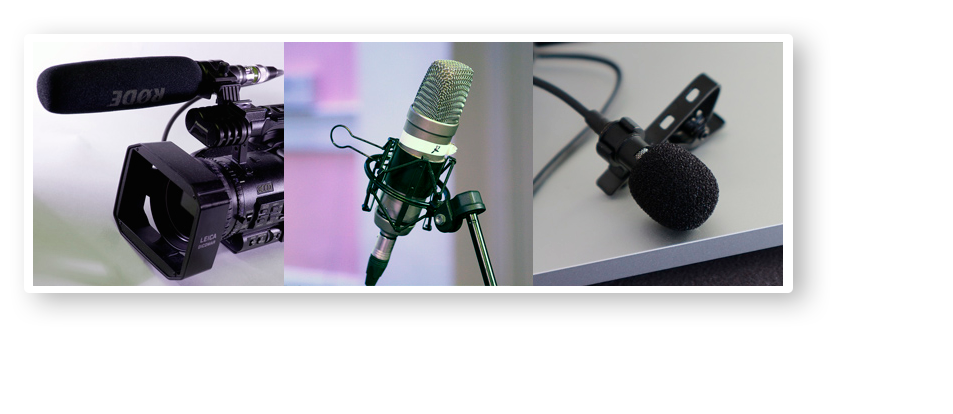
Shotgun microphones are those that are positioned just above the camera and allow the audio to be captured unidirectional, that is, it will only capture what is right in front of the microphone, eliminating side and rear noise. It's a good microphone, but if the camera is too far away from the teacher, it may not pick up the voice as well as the other microphones.
Studio microphones are used in many professions to record voices very clearly. In this case, to achieve maximum effect, you should speak close to him, so he could appear in the frame. This microphone is ideal for recording voice-over in tutorials or where the teacher does not appear on screen.
Finally, lavaliere or lavaliere microphones are very useful for recording the voice up close and without the microphone showing much. Being so small, we can clip them on our clothes or, as the name suggests, on the lapel of our jacket and, hiding the cables inside our clothes, it will be a very professional image. It is very important to take your position into account, as it will pick up any noise from rubbing against clothing or skin.
If you don't want or can't invest in a microphone and your only option is to use the camera's built-in microphone, we recommend that you record in non-echoing spaces, such as a small or wooden room, for example, and where there is no noise external.
3. Illumination
Good lighting is key to make the difference between an amateur and a professional e-learning. We can record our videos with two types of lighting, natural or artificial. Both are good options, but they have their pros and cons.
With natural lighting we can save costs by using sunlight to record our videos, but we must bear in mind that the intensity and color of the light will vary throughout the day according to the movement of the sun and that will be reflected in our video. That a shot has a warm light and the next shot has a cold light is unprofessional and fixing it in post-production is not easy. To avoid this, we recommend that you always record at the same time (morning light is the best) and that you perform white balances from time to time so that each recording has the same tones.
On the other hand, if you are looking for uniformity or recording in a place where natural light cannot reach, you can use artificial lighting. It is preferable to use studio lights for recording instead of normal lighting (lamps, fluorescent lamps ...), since the latter have different shades. We seek uniform lighting so that our online courses have a professional appearance. It is a more expensive option, but it is worth investing in it.
There are several techniques to create uniform lighting. The best known of these is 3-point lighting. It consists of using a main point of light to illuminate the person, a lateral one to soften the shadows and a rear one to highlight the figure in the background. Nowadays, ring lights have also become fashionable, which evenly illuminate the face and are cheaper and easier to use.
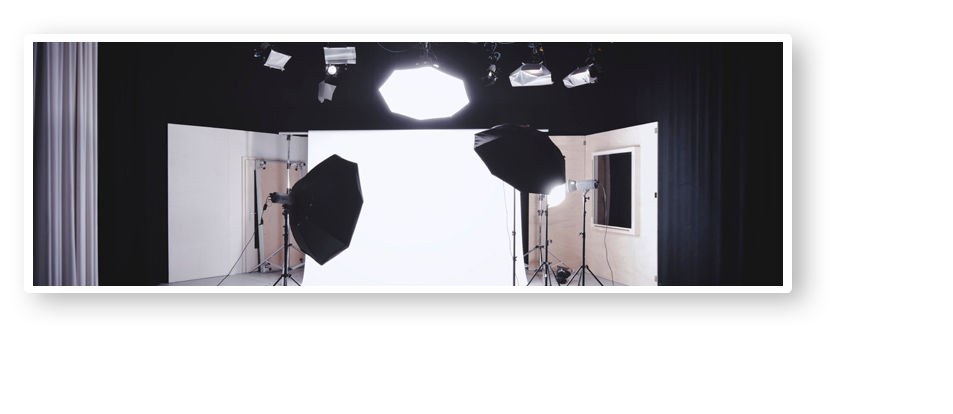
4. Space
It is not the same to record your online course in the dining room of your home than in a meeting room or in a study. The space where we record helps to contextualize our course, but we must always keep in mind that the teacher is the main focus. For this reason, we must avoid that unwanted movements appear or that the background is too busy and that it distracts the student.
If you don't have a suitable location available, you can always use the chroma. It will allow, in the editing of the video, to transfer the teacher to any place. There are only two things to keep in mind when shooting chroma: good lighting and avoiding shadows on the green screen.
5. Framing
Isn't it true that in a face-to-face course the teacher usually moves while explaining the content so that the students continue to pay attention? In online courses we must also keep the student's attention, obviously with the content, but also with the plans we use. Changing plans and the teacher's position will attract more attention than if the teacher is always still.
But, which shots are the best to record the teacher? If we use very far shots, we will lose the nuances of the teacher's face, but if we get too close, we will lose the expressiveness of the arms and body. Therefore, the ideal would be to have long medium shots (up to the waist) and use American shots (up to the knees) or whole shots (the whole body) when we want to emphasize some movement or posture of the body. It is also very important that we record with the camera at the teacher's eye level and avoid framing by places like the neck or wrists (we don't want it to look like a floating head or a teacher without hands).

To finish perfecting our frames, we can help ourselves with a grid that is incorporated in many cameras and mobiles. This grid is based on the rule of three thirds, which marks the points where you pay the most attention.
As a last tip, we recommend you to record several takes of the same shot, to make sure that, if a take has not gone well, you have several alternatives. Otherwise, you will have to re-record the take again, preparing all the set-up you assembled.
6. Video format
To upload the videos of your course in Foxize Cloud we recommend these minimums for your videos:
- Frame size: 1920×1080
- Aspect ratio: 16:9
- Frame rate: 25
- When doing the export, it is important to apply a bit rate: 14-16 (Mbps)
You can overcome it, but keep in mind that the maximum size per uploaded material that it accepts is 1,5GB, so if you have recorded in 4K, you will surely have to reduce the quality in post-production. In a previous article we shared with you 10 video editing tools, so you can choose the one that best suits you and your needs.
With these tips, you will be ready to start recording your first online course. If you still don't have your own online training school, at Foxize Cloud we offer you a 30-day free trial, without obligation.
